Nudity in the privacy of our homes? We seem to be fine with that – well, sort of. But then there’s nudity on the beach, nudes in advertising, nudes in music videos, in film, and of course on the Internet.
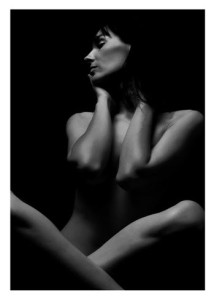 What is it about nudity that disturbs us so? Why does it consistently cause controversy in this country, even as one generation’s obscenity becomes the next generation’s art?
What is it about nudity that disturbs us so? Why does it consistently cause controversy in this country, even as one generation’s obscenity becomes the next generation’s art?
Of course there are occasions where nudity has no place. Unless you live in a Nudist Colony, you’re not doing your visiting in the buff. And we can probably identify many places where overexposure is nonsensical and utterly gratuitous – including in fashion, media, and entertainment.
Partly, this discomfort with nudity is due to the way our (Puritanical) American society is programmed; naturally, we go about our business clothed for practical reasons, and in the privacy of our homes for learned reasons of culture and identity.
Common Sense
So isn’t this a matter of common sense? Context? Could it be that we are lightening up when it comes to nudity? Are we less likely to be shocked by every aspect, in every venue?
I think so. Yet conservative factions continue to churn up clouds of concern that seem overwrought and unwarranted.
Are there no limits to what social norms should permit?
Personally, I think there are limits to everything to do with human behavior – but my limits (and my tolerance) may be different from yours.
(Not) hot, but bothered
Yesterday, a friend told me about a web site that promotes the green movement, and various peace initiatives. It’s a site run primarily by women, called Peace Paint. 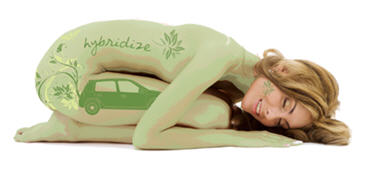 Apparently, its banner image and some illustrations feature the female figure, discreetly painted with 60s peace symbols, flags, text, and various emblems evoking an idealized, integrated, and socially responsible planet.
Apparently, its banner image and some illustrations feature the female figure, discreetly painted with 60s peace symbols, flags, text, and various emblems evoking an idealized, integrated, and socially responsible planet.
The use of nudity comes across as innocent (in a free love sort of aesthetic), and certainly isn’t offensive. Not to me, anyway.
Yet a small brouhaha is brewing over the use of these innocuous images, which blend appropriately with the tone of the site, and in which there is not so much as a nipple to be seen.
What’s so wrong with the human body as a lighthearted and natural means to promote a platform of peace?
History, history, history
The nude is a timeless fixture in art history: sculptors, painters, and photographers all pay homage to human attributes – strength, beauty, fragility, and more – by continually reinterpreting human form. In the hands of an artist, the body becomes a vehicle for symbolism and philosophy, for examination and creative process, as well as a universal landscape that is both unique and transcendent.
Nudity in art – there, can we agree?
Since art forms vary tremendously (as does taste, and opinion on what is tasteful), even in the realm of art, we’re unlikely to agree on what is appropriate, beautiful, artful, provocative, erotic, or for some – pornographic.
Nonetheless, fine art is filled with fine examples of the human figure. And incidentally – what we take today for high art was often, in its day, controversial.
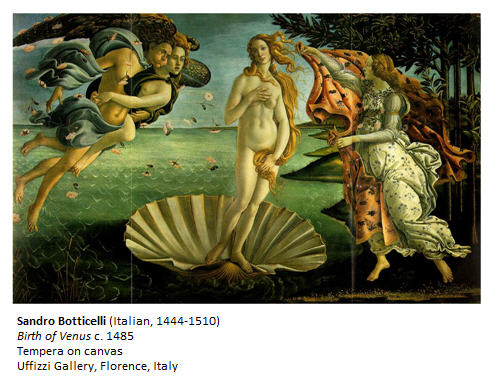
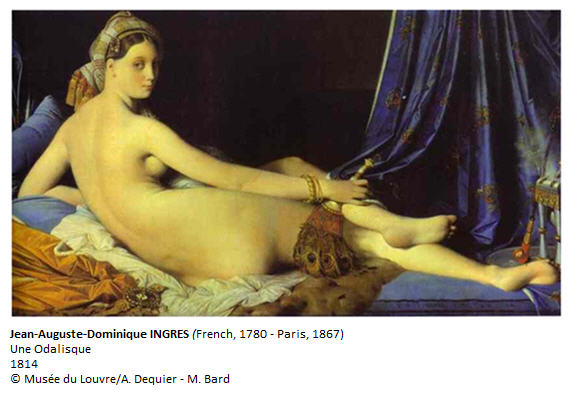
More images.
Consider Botticelli’s Birth of Venus (c. 1485), or Une Odalisque (1814) from Ingres.
Perhaps you prefer the nudes of Albrecht Durer, Peter Paul Rubens, Camille Corot, or Auguste Rodin, who not only created monumental sculptures (among them the very famous Thinker, and The Kiss) but he also produced what were considered erotic Lesbian drawings and watercolors that many of us find exquisite.
The reclining nude is a common theme throughout art history (as in the Odalisque, as in Edouard Manet’s Olympia, which was shocking at the time, or as in Corot’s Bacchante).
Henri Matisse and Henry Moore‘s reclining nudes, among modernism’s many splendid contributions, bring a whole other sensibility and style to the human figure.
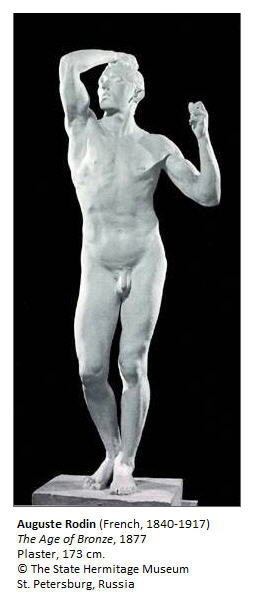


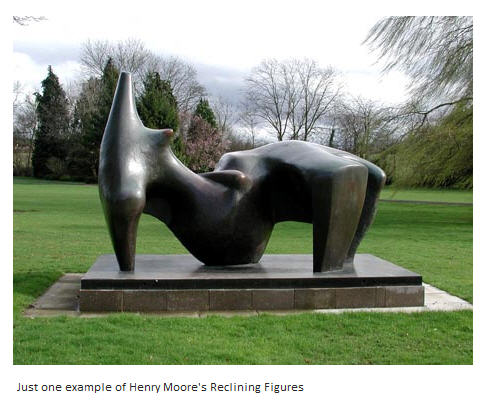
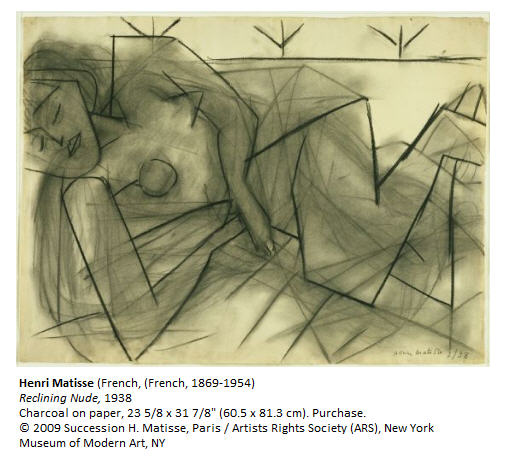
When nudity expresses our most vulnerable selves 
Austrian expressionist Egon Schiele painted at the turn of the 20th century. There is something tortured and painful in his work. His nudes are not only erotically charged, but poignant and disturbing; sexuality and vulnerability unite in a powerful combination.
(Take a look at this wonderful selection of Schiele works on YouTube.)

Photographers like Alfred Stieglitz, Edward Weston, and Man Ray depicted our humanity through the lens. Their black and white nudes are among the most elegant and iconic of the 20th century, realistic and surrealistic interpretations of beauty and art as embodied by the naked form.
More familiar photographic images?
What could be more innocently sexual than the fetching Red Velvet Series of Marilyn Monroe by Tom Kelly? Tame by today’s standards, 22-year old Norma Jean seems more vulnerable than sexual.

Contemporary art nudes as concept, statement, and image
And the nudes we find in contemporary art? Images are often as much about social statement or concept, as they are about the process of painting or sculpting, or representing the artist’s vision of the human form.
South African born Marlene Dumas is acclaimed for her unsettling imagery that explores sexual, racial, and gender identity, as well as themes of sexual and political violence.
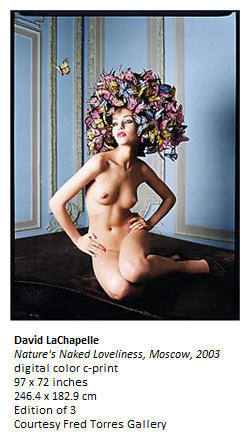 Note: For those who can get to the NYC area, Paul Kasmin Gallery’s “Naked!” (through September 19) looks worth the visit.
Note: For those who can get to the NYC area, Paul Kasmin Gallery’s “Naked!” (through September 19) looks worth the visit.
Read more in their press release.
Nudity sells
Nothing sells magazines like a great cover. And nothing works quite as well (for many publications) as highlighting the nude female figure. Nudity sells, just like sex sells.
In some instances, we’re curious. We want to see how we stack up against models, celebrities, and other “regular” people. In other instances, nudity serves as an awakening, a kind of liberating force in an over-moralizing society.
Case in point: Demi Moore’s 1991 Vanity Fair cover did more than just cause a stir. It allowed pregnancy to be publicly perceived as beautiful. Pregnant women were suddenly “out of the closet” and not only comfortable in their skin, but glamorously so.
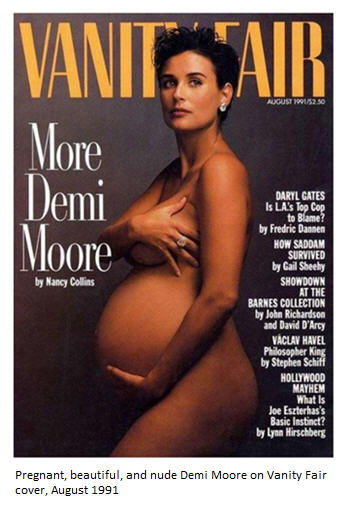
There’s no question that baring all (or almost) is a tried-and-true advertising trick. And why shouldn’t Peace Paint use it in the name of laudable objectives?
Nudity is especially effective in fashion or lifestyle spreads, and in promoting certain personal care products and services. The advertisers are selling us those bodies, directly or indirectly, so isn’t there some logic to that?
Fear of the erotic
Perhaps the concern, for some, is based on fear of the erotic. But let’s remember that modesty is learned in childhood. Likewise, shame of our bodies and discomfort with our desires.
That discomfort is often encouraged through repressive culture, especially for women, and comparisons that add to the same we feel with “less than perfect” bodies.
Nudity is a natural state; sexuality is a necessary one. When will we cease fearing – and judging – what is both beautiful and irrepressibly human?
So what about nudity on the Internet?
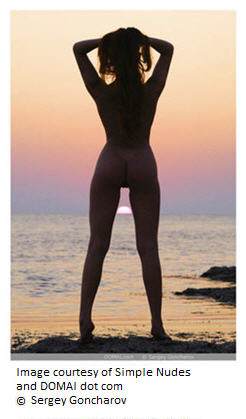 We know the Internet is overrun with images – of all sorts. Amateur nudes, celebrity nudes, and… well, nudes in action … we might say. You name it, you’ll find it.
We know the Internet is overrun with images – of all sorts. Amateur nudes, celebrity nudes, and… well, nudes in action … we might say. You name it, you’ll find it.
Is titillation or arousal always the objective? Or is it the fact that it’s a possible consequence that remains so troubling?
The line between appropriate and inappropriate, or erotica and pornography, is likely to be an individual judgment call. And each of us is entitled to our own opinion.
Here are some thoughts:
- Nudity can be art – but not very sexy.
- Nudity can be sexy – but not art.
- Nudity can be erotic, and sexy, and art.
- Nudity can also address other objectives and achieve other results; it can be innocent, funny, matter-of-fact, educational, clinical, therapeutic.
- Nudity does not equate to an open invitation to “inappropriate” acts of sexuality.
The Internet provides ample expressions of sexuality, generally with some amount of nudity, for a wide range of tastes. But nudity in and of itself should not be confused with behavior or condemned across the board.
Nudity as freedom, and healing force
A young woman I once knew underwent a mastectomy before the age of twenty. She was sensual, sexual, and had an otherwise “perfect” body.
 On a nudist beach on the Aegean, she was able to sunbathe free of stigma. Since no one wore a bathing suit, she got little more than a routine glance, like everyone else. She was just another swimmer, another body on the beach.
On a nudist beach on the Aegean, she was able to sunbathe free of stigma. Since no one wore a bathing suit, she got little more than a routine glance, like everyone else. She was just another swimmer, another body on the beach.
In those moments, she told me, she felt free.
If we choose to celebrate the human form – preferably in a range of shapes and sizes – who knows… might we come to appreciate ourselves as we are, as art?
What if we looked at our sexuality as both extraordinary and natural?
If you want explicit sexual imagery online, there is no shortage. The extent to which we protect ourselves and children (minors) from what we deem inappropriate is a legal and moral matter, as well as an issue of safety – and not one I take lightly.
But if you are searching for beauty and eroticism of nudity on the Internet, rest assured, it’s there. And plenty of it is tasteful.
Is it also artistic? Sexy? Will we go back for more and feel fine with it?
I hope so. But it’s really up to each of us to choose for ourselves.

Please note: Reproduction permissions were received wherever possible and proper attributions provided. If I have missed an attribution or misunderstood reproduction rights, please use the About page contact information and let me know. I will modify attribution or substitute with a thumbnail as required. My intent is educational, not commercial.
You May Also Enjoy

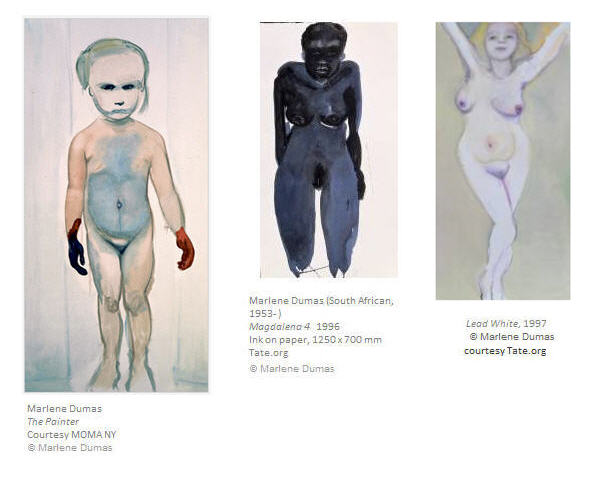
Very well said.
Excellent art samples too. I didn’t know that Matisse drawing, I love it.
I have blogged you here.
Thank you for a very well written article.
Americans overwhelmingly tend to conflate nudity with sex. I doubt anything changes that fact about Americans anytime soon.
Excellent piece.
I have taught life drawing and painting for many years, and it always amazes me to see how new students at first are rather embarrassed to view the nude model. After a semester or two, however, seeing the nude becomes second nature; viewed as a form of still life.
In today’s society, artists are perhaps the only ones who are granted the privilege of viewing the nude for extended periods of time—while drawing and painting them. I have come to have great admiration and respect for the human form; a magnificent machine indeed.
Thanks again for sharing your observations with us.
Nice article. You serve the art community with this kind of research, analysis and links you present on your site. I look forward to this daily plate and its wide range of commentary.
As a straight male, I greatly enjoyed the essay and the illustrations. I see a pattern — female nudes only. If I remember Anatomy 101, I believe the male of the species exists unclothed, also, at times. What’s your take on male nudity, from, say, Grecian urns to Michelangelo’s David to Burt Reynolds in Cosmo to Robert Mapplethorpe, to hit some highlights of the genre? It’s worth thinking how your comments apply to the male figure in culture and art.
On a side note, I’m pleased to see that Princeton University helped provide compelling link material.
In fact, I had additional images selected and attributed, including Rodin’s “The Age of Bronze” (1877), and of course, Michelangelo’s “David.” I was also perusing black and white fine art photography specifically looking for males (including Mapplethorpe). Finding male nudes that I thought would suit the article was far more difficult.
One practical matter.
I believe in properly attributing all images, and requesting reproduction permissions where needed. I did that for all images here; it’s very time consuming.
That said, I will tuck in the Rodin image, and try to find the attribution for the Mapplethorpe I found, which I think is stunning, a crouching male nude.
Secondly, I simply ran out of space (and time, and “reasonableness”) relative to including images. I was considering less frequently viewed examples of men (beyond Rodin or Michelangelo), a “non controversial” Mapplethorpe, or (again) Schiele, who did some nude self portraits that I think are gorgeous, but difficult; they’re not for everyone.
I also was searching for contemporary male nudes, preferably paintings, and have had difficulty finding images. (To my disappointment.)
If you go to my post on Male Baldness, towards the end, you will see an exquisite male nude, a black and white photographic image.
My take on male nudes in media?
They are more threatening than female nudes (to some), and there are fewer choices, particularly if looking for imagery that is not explicitly sexual (my intent).
Some possible reasons:
Artists, historically, were men; I might assume they painted women more frequently. Clearly scenes include male and female nudes, often pulled from religious and mythological narratives.
A final point (a generalization) – both men and women find nude women beautiful, regardless of sexual orientation. (Straight) women also enjoy looking at nude men, though I dare say that isn’t the case for straight men.
I agree – Princeton provides many high quality resources of all sorts.
“A final point (a generalization) – both men and women find nude women beautiful, regardless of sexual orientation.”
Quite so.
Also, you will often hear a woman comment on another woman’s beauty, but men never do that about men. Part may be fear of being misunderstood, but I also think they just don’t tend to notice men.
My first exposure to a nude woman was as a child by way of my mother’s art books.
I recall, vividly, the picture of Olympia from Manet shown here. She was the most exquisite nude woman I had ever seen. One of my other favorites, The Kiss, by Rodin, mentioned in the comments epitomizes the joyous connection of a man and women.
What a beautiful article.
Merci!
Very good article.
I think you should also have pointed out that if you don’t like a particular form of creative expression, the thing to do is not to try to get it banned and prosecute the artist, but to turn your attention elsewhere and leave those who do appreciate it well alone.
Respectfully.
I couldn’t agree more.
My own nakedness has never bothered me. But men’s interest in women’s bodies makes us self-conscious even if we weren’t to start with.
Of course, men don’t want to expose themselves for fear of being sized up or becoming aroused under scrutiny (film ‘The Full Monty’ talks about male insecurity over nudity).
The film ‘The Calendar Girls’ tells the story of a group of middle-aged women who posed tastefully in the nude for a charity calendar.
The uproar was that these women were not young women with flawless bodies but women who had given birth or grown old.
The time I felt most relaxed in public with no clothes on was when I realised that we had ended up on a gay nudist beach in Mikonos, Greece. I could then stop worrying that heterosexual men might assume that I was sunbathing nude in order to attract their attention.
Some people make the mistake of thinking that only the female nude body is sensual or beautiful. The ancient Greeks were very fond of male nudes and, no coincidence, also relaxed about homosexuality.
Men’s sexual response to the naked body lends a special significance to nudity. Women are interested more from an artistic perspective or to measure themselves against other women.
I am the developer of the PeacePaint site. Great article that touched on a lot of points that we discuss here on a daily basis.
By the way, we did our best to keep the site kosher for all audiences. Now, most of the body painting photos appear in the PeacePaint Gallery.
Definitely a well-expressed post, right down to every one of the responses so far.
I’m not put off by nudity in art but I always question whether or not it is absolutely necessary. It’s certainly how it’s portrayed in imagery that may get me to like it, dislike it or be indifferent to it. This isn’t because I’m a visual artist either. There are many artists who flat out frown on any nudity, whatsoever, appearing in imagery. To understand my POV, see here:
http://themofman.wordpress.com/mof-on-nudity-in-photography/
I have come across many situations that in my judgement, nudity or even semi-nudity was absolutely uncalled for, and it makes me seriously question whether or not I need; not want, to display it in my own illustrations, graphics and photography.
I agree with you, Allan. Often nudity is utterly gratuitous. And intent is indeed a factor. Nonetheless, as a culture, we frequently make such a fuss over art – what I would consider art – if it even suggests the sexual. I’m curious – do the Schiele nudes offend you? I find them powerful, wrenching, and quite beautiful.
Kudos for posting such a useful blog. It isn’t only informative but also incredibly artistic too.
Freedom to be nude, so prevalent elsewhere in the world will come to US once we accept the metric system. ;O)
Excellent!